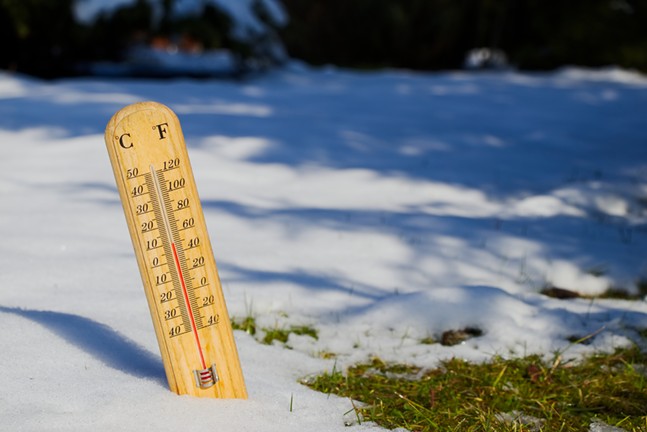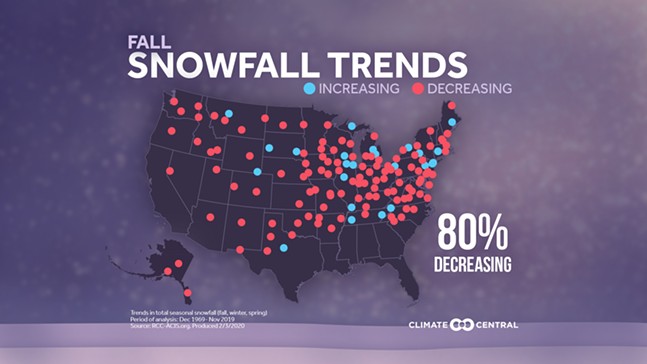Ten years ago this week, the Northeast was hit with an unusually large dump of snow that became known as “Snowmaggedon.” This winter has been decidedly less snowy. When it has snowed this year, accumulation has been minimal. Aside from not providing pretty white scenery, or occasional snow days (as a treat), the lack of winter precipitation is also indicative of increasingly warm winters and declining snowfall across the country.
According to the National Weather Service (NWS), the average temperature in January 2020 was 35.2 degrees, which is 6.8 degrees lower than the historical average, making it the warmest January since 2006, when the monthly average was 38.1 degrees.
While there haven’t been enough days in February to make a conclusion about the month’s temperature, it certainly began on the warm side; the NWS clocked a high of 62 degrees on Feb. 3. Punxsutawney Phil also predicted an early spring after failing to see his shadow, the first time in recorded history he has predicted an early spring two years in a row. (While this technically means nothing, metaphorically it might be something.)
This week, climate research organization Climate Central released a report on snowfall across the country, finding that while it’s difficult to determine a general trend in winter snowfall across the country, there is a clear pattern of snow decreasing in “shoulder seasons” (spring and fall). While it might seem obvious for places with decreased snowfall in those seasons to also have decreased snowfall in winter, climate change can actually increase snowfall in some climates, because warmer air can hold more moisture.
Climate Central measured how many weather stations in a region reported a decrease in snow from 1970-2019. In the Northeast region (which includes Pennsylvania), 32% of weather stations reported decreased snow in winter, while 71% showed a decrease in fall, and 45% in spring. Some East Coast cities, like New York and Philadelphia, showed a significant increase in snowfall in that period.
“[W]arming ocean waters off the coast are also making for favorable conditions for larger and more extreme winter storms,” explains Climate Central.
In January 2020, Pittsburgh had 4.6 inches of snowfall, which is the lowest January snowfall since 1998.
In their report, Climate Central also detailed why snowfall is important, and the risks posed by declining snowfall. Snow plays an important part in keeping the planet cooler by reflecting sunlight back into the atmosphere (as opposed to the earth absorbing the warmth), as well as creating an insulation layer for soil.
“Research has also shown that flood sizes increase exponentially as a higher fraction of precipitation falls as rain rather than as snow, suggesting that flood risk during the winter and spring could increase as our climate warms,” explains the report.



